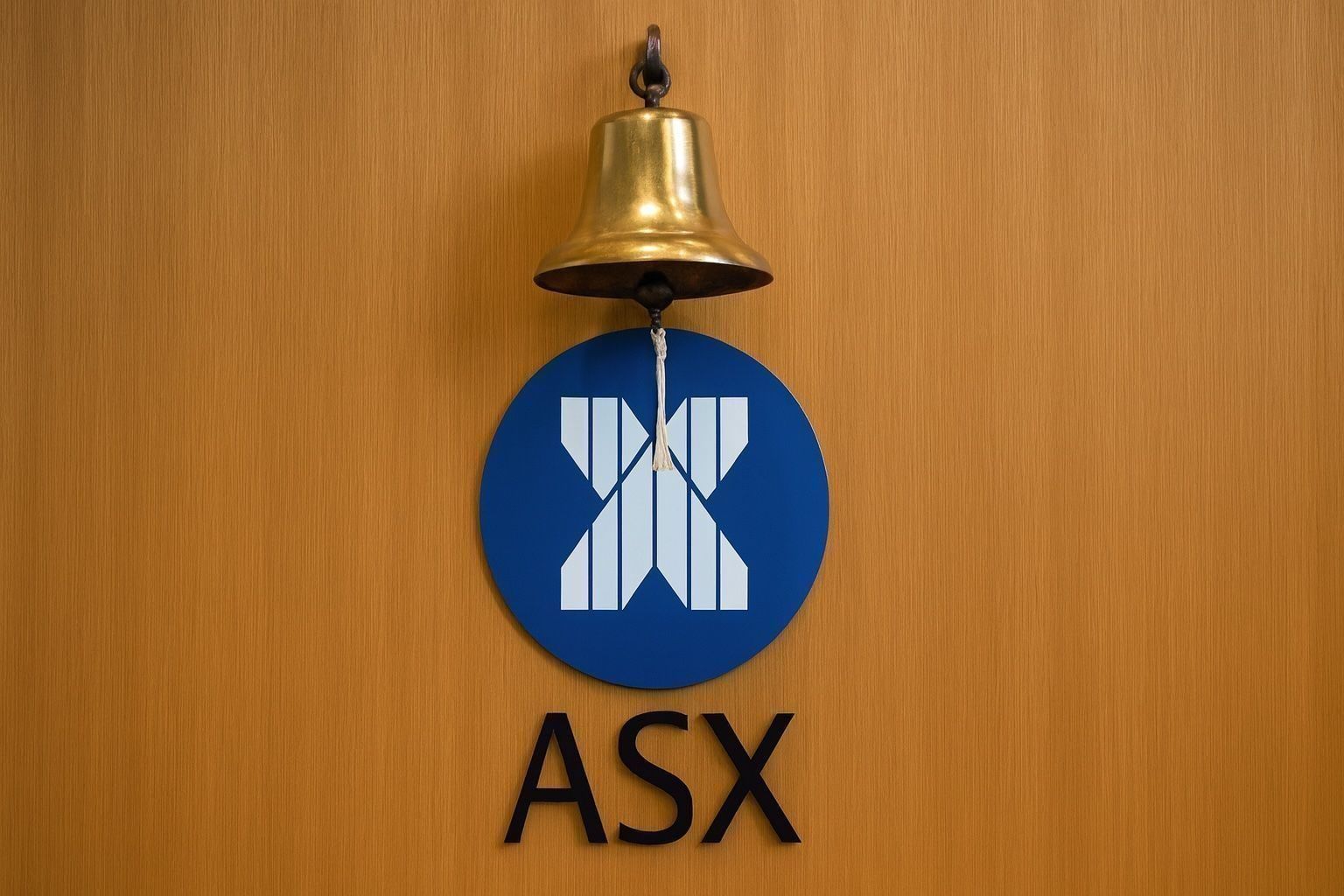Australian shares are bracing for a softer start on Friday, 28 November 2025, after four straight days of gains and a big regulatory move on home lending. The S&P/ASX 200 finished Thursday up around 0.1% at 8,617, with tech and healthcare stocks doing the heavy lifting while energy and materials lagged. [1]
Overnight pricing of SPI futures suggests the Sydney stock market will give back part of that advance at the open. ASX 200 futures were trading roughly 0.6% below Thursday’s close, and local commentary points to an early fall of about 0.3–0.4% for the benchmark index. [2]
At the same time, traders are digesting a major macro‑prudential move by APRA to cap high debt‑to‑income mortgages, a mixed reaction to QBE’s quarterly update and A$450 million buyback plan, a fresh on‑market takeover bid in the gold space, surprisingly strong CAPEX data, and upbeat global risk sentiment driven by expectations of a US Federal Reserve rate cut in December. [3]
Below is everything you need to know about the Sydney stock market before the ASX opens today.
1. Where the ASX 200 Left Off on Thursday
Modest gain, fragile breadth
- The S&P/ASX 200 closed 10.8 points higher (+0.13%) at 8,617.3, extending its winning streak to four sessions – the longest since mid‑May. [4]
- The broader All Ordinaries added 0.14% to 8,912, while the Small Ordinaries matched the benchmark’s 0.13% rise. [5]
- Market breadth was finely balanced: roughly 98 stocks gained and 95 fell on the benchmark, underscoring how narrow the advance remains. [6]
Sectors: Tech rebounds, energy drags
Sector performance on Thursday captured the key rotation underway: [7]
- Information Technology: +2.0%
- Health Care: +0.8%
- Consumer Discretionary: +0.3%
- Industrials: +0.3%
- Financials: +0.1%
- Real Estate: +0.1%
- Materials: –0.2%
- Energy: –1.3%
The move mirrored an overnight surge in US tech stocks, with local heavyweights WiseTech Global (WTC) (+6.9%), Catapult Group (CAT) (+5.7%) and Xero (XRO) (+2.3%) leading the charge. [8]
Elsewhere, Evolution Mining (EVN) rose about 2.2% as investors rotated into gold miners, but the broader resources complex softened as major iron ore and lithium names eased back. [9]
On the stand‑out single‑stock front:
- HMC Capital rallied 10.3% and GQG Partners gained 8.7%, topping the large‑cap leaderboard.
- DroneShield slumped 7.8% and Harvey Norman fell 4.4%, rounding out the session’s worst performers. [10]
Even after this four‑day rebound, the ASX 200 is still nursing a sizeable November drawdown. IG’s week‑ahead note from 21 November flagged the benchmark as down about 4.9% month‑to‑date, heading for its weakest month since September 2022, with financials off more than 7% and IT down over 16% at that point. [11]
2. SPI Futures Point to a Softer Open
Futures pricing
Overnight, ASX 200 futures traded near 8,599, about 0.6% below Thursday’s cash close, signalling a weaker start for local equities. [12]
Separate pre‑market commentary suggests this translates into an opening drop of roughly 31 points, or around 0.35%, for the S&P/ASX 200. [13]
With US cash markets closed for Thanksgiving and global indices mostly treading water, Friday’s open is likely to be driven more by domestic news—especially APRA’s lending crackdown and local corporate updates—than by strong offshore leads. [14]
3. Global Leads: Fed Rate‑Cut Hopes, Quiet Holiday Trade
United States: four‑day rally, then a pause
US equities delivered solid gains on Wednesday, 26 November, before shutting for the Thursday holiday: [15]
- S&P 500: +0.7% to 6,812.61
- Nasdaq Composite: +0.8% to 23,214.69
- Dow Jones Industrial Average: +0.7% to 47,427.12
Technology names such as Nvidia, Microsoft and Broadcom led the advance, while trading platform Robinhood jumped almost 11% on expansion plans. Markets are now pricing roughly an 80% chance of another 25‑basis‑point Fed rate cut at the 9–10 December FOMC meeting, helping to support risk assets into the US Thanksgiving break. [16]
US markets were closed on Thursday, 27 November, and will trade only a shortened session on Friday (Black Friday), closing at 1pm EST, meaning Australian investors will have limited fresh direction from Wall Street during the local morning. [17]
Europe and Asia: steady to higher
European equities largely marked time but held near recent highs:
- The STOXX Europe 600 ended around 575, up about 0.1–0.14%, its fourth straight day of gains and just below one‑week highs. [18]
- Financial services led modest sector gains, while healthcare lagged. Sporting goods maker Puma jumped more than 14% on reports of takeover interest from China’s Anta Sports. [19]
In Asia, sentiment remained cautiously positive, helped by the same Fed‑cut narrative. India’s Nifty 50 and Sensexindices both notched fresh record highs on Thursday, aided by optimism over potential rate cuts from both the Fed and Reserve Bank of India and by softer oil prices. [20]
For the ASX, the overall message from offshore is constructive but not euphoric: investors remain focused on rate cuts and AI‑driven earnings growth, but volumes are thin and any surprise data or geopolitical flare‑ups could quickly jolt sentiment.
4. APRA’s New Mortgage Cap: What It Means for Banks and Housing Stocks
The Australian Prudential Regulation Authority (APRA) dropped the biggest domestic policy surprise on Thursday, announcing new limits on risky home lending aimed at cooling potential vulnerabilities before they get out of hand. [21]
The new rule in a nutshell
From 1 February 2026, authorised deposit‑taking institutions (ADIs) will be allowed to write no more than 20% of new mortgage lending at a debt‑to‑income (DTI) ratio of six times or more, with separate caps for owner‑occupier and investor loans. [22]
APRA says it has observed a pick‑up in high‑DTI lending—especially to investors—as interest rates have fallen, housing credit growth has moved above its long‑run average and property prices have climbed, all against the backdrop of already high household indebtedness. [23]
The regulator characterises the measure as a “guardrail” rather than a “handbrake”, aiming to prevent a future blow‑out in risky lending rather than to slam the brakes on the current cycle.
Market and analyst reaction
- Fitch Ratings argues the cap is unlikely to immediately constrain banks, as most lenders are currently well below the 20% threshold, but sees it as a prudent step to contain riskier lending as rates fall. [24]
- Domain’s chief of research, Nicola Powell, calls the move “a proactive, measured intervention” that strengthens system resilience without significantly curbing credit for most borrowers in the short term. [25]
- MST Marquee analyst Brian Johnson is more sceptical, labelling the policy “all bark but not much bite,” likening it to “banning eight‑foot‑tall people from restaurants” – colourful language, but a genuine reminder that most loans already sit below those DTI levels. [26]
Barrenjoey notes that the new cap is unlikely to be a binding constraint near‑term but flags that recently hotter inflation data and strong CAPEX have already shifted its RBA call: the broker now expects two 25bp RBA hikes in May and August 2026, taking the cash rate back to 4.10% and shaving 4–6% off borrowing capacity for many borrowers. [27]
Impact on ASX sectors to watch
- Major banks and mortgage lenders: Short‑term earnings impact looks minor, but the move reinforces a more cautious stance on risk‑heavy investor loans. Watch CBA, Westpac, NAB, ANZ, Macquarie and Judo Bank for any underperformance relative to the broader market. IG notes financials have already been the weakest major sector in November. [28]
- Property, REITs and developers: The cap itself has limited near‑term impact, but combined with talk of possible RBA hikes in 2026 it could weigh on sentiment around housing turnover and leveraged property plays.
- Non‑bank lenders and BNPL names: Fitch sees limited risk of high‑DTI lending simply migrating to non‑ADIs, but APRA has powers to extend macro‑prudential tools if needed. [29]
On Thursday, the Financials sector eked out a 0.1% gain, underperforming the tech and healthcare rebound and underscoring market caution despite the benign near‑term read‑through. [30]
5. QBE’s 3Q25 Update and A$450m Buyback
Big capital management move, underwhelming market reaction
Insurer QBE Insurance Group (QBE) delivered its September‑quarter 2025 performance update on Thursday, reaffirming a solid operating outlook and announcing a A$450 million on‑market share buyback to run from December 2025 through 2026. [31]
Key points from QBE’s update: [32]
- Expects FY25 gross written premium (GWP) growth in the mid‑single digits on a constant‑currency basis, despite a ~US$250 million drag from a non‑core run‑off portfolio.
- Reiterated guidance for a Group combined operating ratio (COR) of ~92.5% for FY25 and is targeting a similar level in FY26 and FY27.
- Catastrophe claims for the first ten months of 2025 are tracking comfortably below allowance, marking a third consecutive year of favourable catastrophe experience.
- Investment returns remain strong, with total funds under management at US$34.8 billion and a core fixed‑income yield around 3.7%.
- The buyback, funded by surplus capital, is expected to lift total shareholder distributions to roughly 65% of earnings, assuming a ~50% cash dividend payout ratio.
Despite those positives, QBE’s share price tumbled as much as 5.9% intraday to about A$18.62 and ended the session down around 2.8%, a seven‑month low, as investors focused on signs of decelerating premium rate growth and worries that pricing power is fading. [33]
Analysts quoted by Reuters highlighted that QBE and peers had become accustomed to strong premium increases in recent years, and the market appears wary of what a slower pricing cycle could mean for margins, even with lower catastrophe costs and healthy investment income. [34]
What to watch at the open
- Whether bargain hunters step in on the back of the buyback and reassuring COR guidance.
- Read‑through to other insurers such as Suncorp and IAG, particularly if investors start to price in a plateau in premium rates after several years of double‑digit increases.
6. M&A and Corporate News: Venus Metals, Wellnex, Charger & More
QGold’s on‑market takeover bid for Venus Metals (VMC)
Small‑cap gold explorer Venus Metals Corporation (VMC) moved into the spotlight after QGold Pty Ltd formalised an on‑market takeover offer at A$0.17 per share. [35]
Key details: [36]
- The bid is unconditional and all‑cash, with QGold’s broker instructed to buy every VMC share offered on‑market at A$0.17 up to a maximum of 144,341,487 shares – effectively all shares it does not already control.
- QGold currently has a 26.4% stake (51.8 million shares), with VMC’s total shares on issue sitting around 196.1 million.
- Although QGold has already been standing in the market since the initial announcement on 24 November, the formal offer period runs from 12 December 2025 to 16 January 2026, and may be extended.
For investors in the junior gold space, the bid underscores ongoing M&A interest in exploration assets, even after a volatile year for commodity prices.
AGM season: governance and board moves
A raft of annual general meetings on Thursday delivered a mix of routine approvals and notable governance signals:
- Wellnex Life (WNX):
- The healthcare and wellness company reported that all AGM resolutions passed except one (Resolution 2B).
- As a result, non‑executive director Ruari McGirr resigned from the board, and Wellnex says it is seeking a new non‑executive director with strong European market experience. [37]
- Charger Metals (CHR):
- At its AGM in Perth, Charger recorded a “first strike” against its remuneration report, with more than 25% of votes cast against the resolution.
- All director election resolutions were carried, but a resolution seeking approval for a 10% placement capacity failed to secure sufficient support, highlighting shareholder sensitivity around potential dilution. [38]
- Hot Chili (HCH):
- Copper‑gold developer Hot Chili reported that all resolutions at its 2025 AGM were passed on a poll, clearing the way for management to push ahead with its project agenda. [39]
Beyond AGMs, a few other corporate announcements may be on traders’ radars:
- MA Credit Income Trust (MA1) has circulated its equal‑access buyback documentation, with personalised election forms dated 27 November and the buyback scheduled to run from 1 to 22 December. [40]
- National Storage REIT (NSR) confirmed that Q1 FY26 exit statements are now available via Computershare’s Investor Centre, a housekeeping item but relevant for income‑focused holders. [41]
7. Sector Watch: Tech vs Resources, Gold Support, Energy Soft Patch
Thursday’s trade reinforced several cross‑currents that could shape price action at the open:
- Technology: After weeks of underperformance, ASX tech names are tentatively bouncing in line with Wall Street’s AI‑driven rally. The All Tech index gained around 1.16%, with WTC, CAT and XRO leading. The key question for Friday is whether this is the start of a more durable rotation back into growth or just a short‑covering bounce. [42]
- Resources and energy: The Materials sector slipped 0.2% and Energy fell 1.3%, despite iron ore prices ticking up about 1% to US$103.50 a tonne. Brent crude eased 0.5% to around US$62.80 a barrel amid concerns about demand and ongoing geopolitical uncertainty. [43]
- Gold and precious metals: Spot gold edged lower by about 0.3% to roughly US$4,153 an ounce, but remains near record territory, supporting local gold producers such as EVN and other mid‑caps. Futures pricing shows gold hovering just above US$4,160 as traders balance rate‑cut hopes against a quieter holiday trading environment. [44]
- Crypto: Bitcoin continues to hold near the US$91,000 level, up about 1.4%, providing a marginal tailwind for ASX‑listed crypto‑exposed names. [45]
All of this plays into Friday’s likely narrative: tech and interest‑rate sensitive growth stories trying to build on a nascent rebound, while resources and energy adjust to softer commodity pricing and lingering macro uncertainty.
8. Macro Backdrop: CAPEX Surprise, Inflation Jitters and the Aussie Dollar
CAPEX: strongest quarterly jump since 2021
Fresh data on Thursday showed Australian private capital expenditure (CAPEX) rising 6.4% in the September quarter, far above the market’s 0.5% expectation, and up 6.9% over the year—the strongest quarterly increase since the March quarter of 2021. [46]
- Equipment, plant and machinery spending surged 11.5%, with investment in data centres a key contributor.
- Building and structures CAPEX rose 2.1%.
- Non‑mining industries led the charge with an 8.6% rise, while mining CAPEX still grew 0.9%. [47]
Treasurer Jim Chalmers hailed the figures as evidence that business investment is not only recovering but doing so faster than anticipated, particularly in areas like clean energy and digital infrastructure. [48]
Inflation and RBA expectations
The CAPEX surprise landed just a day after hotter‑than‑expected inflation data, which pushed the Australian dollar higher and saw markets sharply pare back expectations of further near‑term RBA cuts. [49]
NAB economists now believe the RBA’s easing cycle is effectively over, warning that any acceleration in growth or tightening of the labour market from here could force the central bank to consider rate hikes as soon as the first half of 2026. [50]
Barrenjoey similarly forecasts two 25bp hikes in May and August 2026, taking the cash rate to 4.10%. [51]
AUD and cross‑asset implications
The Australian dollar hovered around US$0.653–0.654 on Thursday, up roughly 0.3–0.4%, marking its fifth straight daily gain as rate‑differential dynamics turned more supportive and the US dollar softened on Fed‑cut expectations. [52]
Implications for the open:
- A firmer AUD can act as a headwind for export‑exposed sectors such as miners and parts of industrials, while easing imported inflation pressures.
- Strong CAPEX and sticky inflation make it harder for the RBA to justify aggressive easing, which supports bank margins but raises medium‑term valuation questions for highly interest‑sensitive growth stocks and housing‑leveraged names.
9. BNPL and Fintech: Structural Growth Meets Tougher Rules
Alongside APRA’s mortgage move, the Buy Now, Pay Later (BNPL) space received fresh attention thanks to a new market study.
A ResearchAndMarkets.com report released on Thursday projects that the Australian BNPL market will grow 12.1% in 2025 to US$14.52 billion, after a robust 19.8% CAGR between 2021 and 2024. It forecasts the sector to expand at an 8.5% CAGR from 2025 to 2030, reaching roughly US$21.87 billion by decade‑end. [53]
Key themes from the report, relevant for ASX‑listed BNPL and fintech names such as Afterpay’s parent, Zip and Humm: [54]
- Sector diversification: BNPL is spreading beyond fashion and electronics into automotive services, home furnishings, healthcare and education, with partnerships such as Humm‑Lander Toyota and Afterpay‑IKEA broadening reach.
- Regulation tightening: The Treasury Laws Amendment (Responsible Buy Now Pay Later and Other Measures) Act 2024 brings BNPL under the National Consumer Credit Protection Act, forcing providers to hold credit licences and comply with responsible lending rules. ASIC has signalled it expects providers to apply for licences promptly.
- Competition and consolidation: Global players like Klarna and PayPal are intensifying competition, while local firms pursue acquisitions and strategic exits to sharpen their focus on profitable markets.
- Responsible usage focus: Initiatives like self‑regulated spending caps and more transparent fee structures aim to address concerns about household debt stress.
For investors, the message is that BNPL remains a high‑growth segment, but one increasingly shaped by regulation and capital‑discipline expectations. That context matters for how markets value local fintech exposures as tech stocks attempt to recover from a brutal year.
10. Key Things to Watch When the Sydney Market Opens
Putting it all together, here are the main themes likely to drive the ASX 200 at the 28 November 2025 open:
- Index and futures tone
- Futures pricing points to a modest pullback after a four‑day winning streak, with the ASX 200 expected to open roughly 0.3–0.6% lower. [55]
- APRA’s lending cap and bank sentiment
- Watch price action in the big four banks, regional lenders and mortgage insurers as investors assess the long‑term impact of the 20% DTI cap and shifting RBA expectations. Even if the rule is not immediately binding, it signals a more proactive regulator.
- QBE and the broader insurance complex
- QBE’s A$450m buyback and reaffirmed COR guidance compete with investor anxiety about slowing premium growth. Friday’s trade will reveal whether the stock can stabilise after Thursday’s sell‑off—and how peers like IAG and Suncorp trade in sympathy. [56]
- Tech vs resources: does the rotation stick?
- US tech strength and local IT’s 2% rebound put the spotlight on names such as WTC, XRO, Block and other growth favourites. At the same time, investors will be watching whether gold miners can extend gains while bulk commodity and energy names try to shake off recent weakness. [57]
- M&A and small‑cap catalysts
- The QGold–Venus Metals on‑market takeover, Wellnex’s board reshuffle, Charger’s remuneration “first strike” and Hot Chili’s AGM resolutions all provide stock‑specific catalysts in the small‑cap space. Expect heightened activity and volatility across these names. [58]
- Macro and FX sensitivity
- The combination of strong CAPEX, sticky inflation and a rising Aussie dollar keeps the market’s focus on the RBA’s next moves and future earnings revisions. Domestic cyclicals, rate‑sensitives and exporters will all be repriced through that lens. [59]
- Thin offshore leads and event risk
- With the US only partially open later in the global day and Europe in consolidation mode, idiosyncratic stock news and Australia‑specific themes could play an outsized role in Friday’s session, until liquidity normalises next week. [60]
This article is intended as general news and information only and does not constitute financial product advice or a recommendation to buy or sell any security. Always consider your own objectives and seek professional advice before making investment decisions.
References
1. www.marketindex.com.au, 2. au.investing.com, 3. www.apra.gov.au, 4. www.marketindex.com.au, 5. www.marketindex.com.au, 6. www.abc.net.au, 7. www.marketindex.com.au, 8. www.marketindex.com.au, 9. www.marketindex.com.au, 10. www.abc.net.au, 11. www.ig.com, 12. au.investing.com, 13. www.fool.com.au, 14. www.abc.net.au, 15. apnews.com, 16. apnews.com, 17. www.kiplinger.com, 18. www.reuters.com, 19. www.reuters.com, 20. www.reuters.com, 21. www.apra.gov.au, 22. www.apra.gov.au, 23. www.apra.gov.au, 24. www.abc.net.au, 25. www.abc.net.au, 26. www.abc.net.au, 27. www.abc.net.au, 28. www.ig.com, 29. www.abc.net.au, 30. www.marketindex.com.au, 31. www.qbe.com, 32. www.qbe.com, 33. www.abc.net.au, 34. www.abc.net.au, 35. company-announcements.afr.com, 36. company-announcements.afr.com, 37. www.investegate.co.uk, 38. company-announcements.afr.com, 39. investingnews.com, 40. data-api.marketindex.com.au, 41. company-announcements.afr.com, 42. www.marketindex.com.au, 43. www.marketindex.com.au, 44. www.abc.net.au, 45. www.abc.net.au, 46. www.abc.net.au, 47. www.abc.net.au, 48. www.abc.net.au, 49. www.abc.net.au, 50. www.abc.net.au, 51. www.abc.net.au, 52. www.marketindex.com.au, 53. www.businesswire.com, 54. www.businesswire.com, 55. au.investing.com, 56. www.qbe.com, 57. www.marketindex.com.au, 58. company-announcements.afr.com, 59. www.abc.net.au, 60. www.reuters.com







